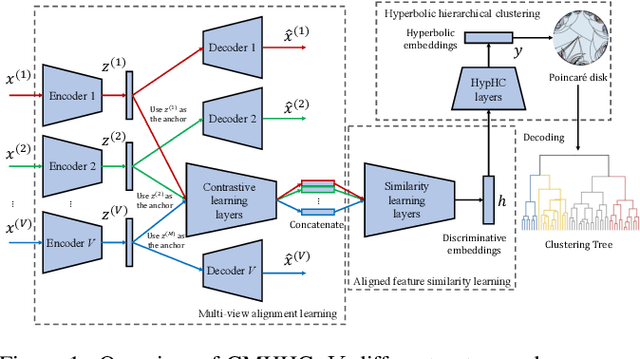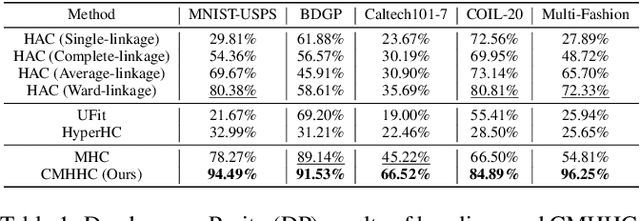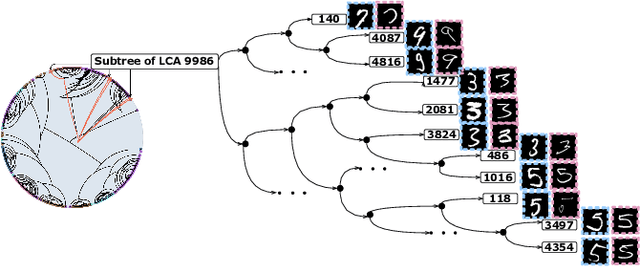Bing Bai
MPCOM: Robotic Data Gathering with Radio Mapping and Model Predictive Communication
Apr 16, 2024Abstract:Robotic data gathering (RDG) is an emerging paradigm that navigates a robot to harvest data from remote sensors. However, motion planning in this paradigm needs to maximize the RDG efficiency instead of the navigation efficiency, for which the existing motion planning methods become inefficient, as they plan robot trajectories merely according to motion factors. This paper proposes radio map guided model predictive communication (MPCOM), which navigates the robot with both grid and radio maps for shape-aware collision avoidance and communication-aware trajectory generation in a dynamic environment. The proposed MPCOM is able to trade off the time spent on reaching goal, avoiding collision, and improving communication. MPCOM captures high-order signal propagation characteristics using radio maps and incorporates the map-guided communication regularizer to the motion planning block. Experiments in IRSIM and CARLA simulators show that the proposed MPCOM outperforms other benchmarks in both LOS and NLOS cases. Real-world testing based on car-like robots is also provided to demonstrate the effectiveness of MPCOM in indoor environments.
A Virtual Reality Training System for Automotive Engines Assembly and Disassembly
Nov 02, 2023



Abstract:Automotive engine assembly and disassembly are common and crucial programs in the automotive industry. Traditional education trains students to learn automotive engine assembly and disassembly in lecture courses and then to operate with physical engines, which are generally low effectiveness and high cost. In this work, we developed a multi-layer structured Virtual Reality (VR) system to provide students with training in automotive engine (Buick Verano) assembly and disassembly. We designed the VR training system with The VR training system is designed to have several major features, including replaceable engine parts and reusable tools, friendly user interfaces and guidance, and bottom-up designed multi-layer architecture, which can be extended to various engine models. The VR system is evaluated with controlled experiments of two groups of students. The results demonstrate that our VR training system provides remarkable usability in terms of effectiveness and efficiency. Currently, our VR system has been demonstrated and employed in the courses of Chinese colleges to train students in automotive engine assembly and disassembly. A free-to-use executable file (Microsoft Windows) and open-source code are available at https://github.com/LadissonLai/SUSTech_VREngine for facilitating the development of VR systems in the automotive industry. Finally, a video describing the operations in our VR training system is available at https://www.youtube.com/watch?v=yZe4YTwwAC4
A Novel Convolutional Neural Network Architecture with a Continuous Symmetry
Aug 09, 2023



Abstract:This paper introduces a new Convolutional Neural Network (ConvNet) architecture inspired by a class of partial differential equations (PDEs) called quasi-linear hyperbolic systems. With comparable performance on the image classification task, it allows for the modification of the weights via a continuous group of symmetry. This is a significant shift from traditional models where the architecture and weights are essentially fixed. We wish to promote the (internal) symmetry as a new desirable property for a neural network, and to draw attention to the PDE perspective in analyzing and interpreting ConvNets in the broader Deep Learning community.
Integrated Photonic Reservoir Computing with All-Optical Readout
Jun 28, 2023Abstract:Integrated photonic reservoir computing has been demonstrated to be able to tackle different problems because of its neural network nature. A key advantage of photonic reservoir computing over other neuromorphic paradigms is its straightforward readout system, which facilitates both rapid training and robust, fabrication variation-insensitive photonic integrated hardware implementation for real-time processing. We present our recent development of a fully-optical, coherent photonic reservoir chip integrated with an optical readout system, capitalizing on these benefits. Alongside the integrated system, we also demonstrate a weight update strategy that is suitable for the integrated optical readout hardware. Using this online training scheme, we successfully solved 3-bit header recognition and delayed XOR tasks at 20 Gbps in real-time, all within the optical domain without excess delays.
Uncertainty-Aware Learning Against Label Noise on Imbalanced Datasets
Jul 12, 2022



Abstract:Learning against label noise is a vital topic to guarantee a reliable performance for deep neural networks. Recent research usually refers to dynamic noise modeling with model output probabilities and loss values, and then separates clean and noisy samples. These methods have gained notable success. However, unlike cherry-picked data, existing approaches often cannot perform well when facing imbalanced datasets, a common scenario in the real world. We thoroughly investigate this phenomenon and point out two major issues that hinder the performance, i.e., \emph{inter-class loss distribution discrepancy} and \emph{misleading predictions due to uncertainty}. The first issue is that existing methods often perform class-agnostic noise modeling. However, loss distributions show a significant discrepancy among classes under class imbalance, and class-agnostic noise modeling can easily get confused with noisy samples and samples in minority classes. The second issue refers to that models may output misleading predictions due to epistemic uncertainty and aleatoric uncertainty, thus existing methods that rely solely on the output probabilities may fail to distinguish confident samples. Inspired by our observations, we propose an Uncertainty-aware Label Correction framework~(ULC) to handle label noise on imbalanced datasets. First, we perform epistemic uncertainty-aware class-specific noise modeling to identify trustworthy clean samples and refine/discard highly confident true/corrupted labels. Then, we introduce aleatoric uncertainty in the subsequent learning process to prevent noise accumulation in the label noise modeling process. We conduct experiments on several synthetic and real-world datasets. The results demonstrate the effectiveness of the proposed method, especially on imbalanced datasets.
Contrastive Multi-view Hyperbolic Hierarchical Clustering
May 05, 2022



Abstract:Hierarchical clustering recursively partitions data at an increasingly finer granularity. In real-world applications, multi-view data have become increasingly important. This raises a less investigated problem, i.e., multi-view hierarchical clustering, to better understand the hierarchical structure of multi-view data. To this end, we propose a novel neural network-based model, namely Contrastive Multi-view Hyperbolic Hierarchical Clustering (CMHHC). It consists of three components, i.e., multi-view alignment learning, aligned feature similarity learning, and continuous hyperbolic hierarchical clustering. First, we align sample-level representations across multiple views in a contrastive way to capture the view-invariance information. Next, we utilize both the manifold and Euclidean similarities to improve the metric property. Then, we embed the representations into a hyperbolic space and optimize the hyperbolic embeddings via a continuous relaxation of hierarchical clustering loss. Finally, a binary clustering tree is decoded from optimized hyperbolic embeddings. Experimental results on five real-world datasets demonstrate the effectiveness of the proposed method and its components.
Capture Uncertainties in Deep Neural Networks for Safe Operation of Autonomous Driving Vehicles
Aug 11, 2021Abstract:Uncertainties in Deep Neural Network (DNN)-based perception and vehicle's motion pose challenges to the development of safe autonomous driving vehicles. In this paper, we propose a safe motion planning framework featuring the quantification and propagation of DNN-based perception uncertainties and motion uncertainties. Contributions of this work are twofold: (1) A Bayesian Deep Neural network model which detects 3D objects and quantitatively captures the associated aleatoric and epistemic uncertainties of DNNs; (2) An uncertainty-aware motion planning algorithm (PU-RRT) that accounts for uncertainties in object detection and ego-vehicle's motion. The proposed approaches are validated via simulated complex scenarios built in CARLA. Experimental results show that the proposed motion planning scheme can cope with uncertainties of DNN-based perception and vehicle motion, and improve the operational safety of autonomous vehicles while still achieving desirable efficiency.
2nd Place Solution for Waymo Open Dataset Challenge -- Real-time 2D Object Detection
Jun 16, 2021



Abstract:In an autonomous driving system, it is essential to recognize vehicles, pedestrians and cyclists from images. Besides the high accuracy of the prediction, the requirement of real-time running brings new challenges for convolutional network models. In this report, we introduce a real-time method to detect the 2D objects from images. We aggregate several popular one-stage object detectors and train the models of variety input strategies independently, to yield better performance for accurate multi-scale detection of each category, especially for small objects. For model acceleration, we leverage TensorRT to optimize the inference time of our detection pipeline. As shown in the leaderboard, our proposed detection framework ranks the 2nd place with 75.00% L1 mAP and 69.72% L2 mAP in the real-time 2D detection track of the Waymo Open Dataset Challenges, while our framework achieves the latency of 45.8ms/frame on an Nvidia Tesla V100 GPU.
Reliable Evaluations for Natural Language Inference based on a Unified Cross-dataset Benchmark
Oct 15, 2020



Abstract:Recent studies show that crowd-sourced Natural Language Inference (NLI) datasets may suffer from significant biases like annotation artifacts. Models utilizing these superficial clues gain mirage advantages on the in-domain testing set, which makes the evaluation results over-estimated. The lack of trustworthy evaluation settings and benchmarks stalls the progress of NLI research. In this paper, we propose to assess a model's trustworthy generalization performance with cross-datasets evaluation. We present a new unified cross-datasets benchmark with 14 NLI datasets, and re-evaluate 9 widely-used neural network-based NLI models as well as 5 recently proposed debiasing methods for annotation artifacts. Our proposed evaluation scheme and experimental baselines could provide a basis to inspire future reliable NLI research.
Domain Agnostic Learning for Unbiased Authentication
Oct 11, 2020



Abstract:Authentication is the task of confirming the matching relationship between a data instance and a given identity. Typical examples of authentication problems include face recognition and person re-identification. Data-driven authentication could be affected by undesired biases, i.e., the models are often trained in one domain (e.g., for people wearing spring outfits) while applied in other domains (e.g., they change the clothes to summer outfits). Previous works have made efforts to eliminate domain-difference. They typically assume domain annotations are provided, and all the domains share classes. However, for authentication, there could be a large number of domains shared by different identities/classes, and it is impossible to annotate these domains exhaustively. It could make domain-difference challenging to model and eliminate. In this paper, we propose a domain-agnostic method that eliminates domain-difference without domain labels. We alternately perform latent domain discovery and domain-difference elimination until our model no longer detects domain-difference. In our approach, the latent domains are discovered by learning the heterogeneous predictive relationships between inputs and outputs. Then domain-difference is eliminated in both class-dependent and class-independent components. Comprehensive empirical evaluation results are provided to demonstrate the effectiveness and superiority of our proposed method.
 Add to Chrome
Add to Chrome Add to Firefox
Add to Firefox Add to Edge
Add to Edge